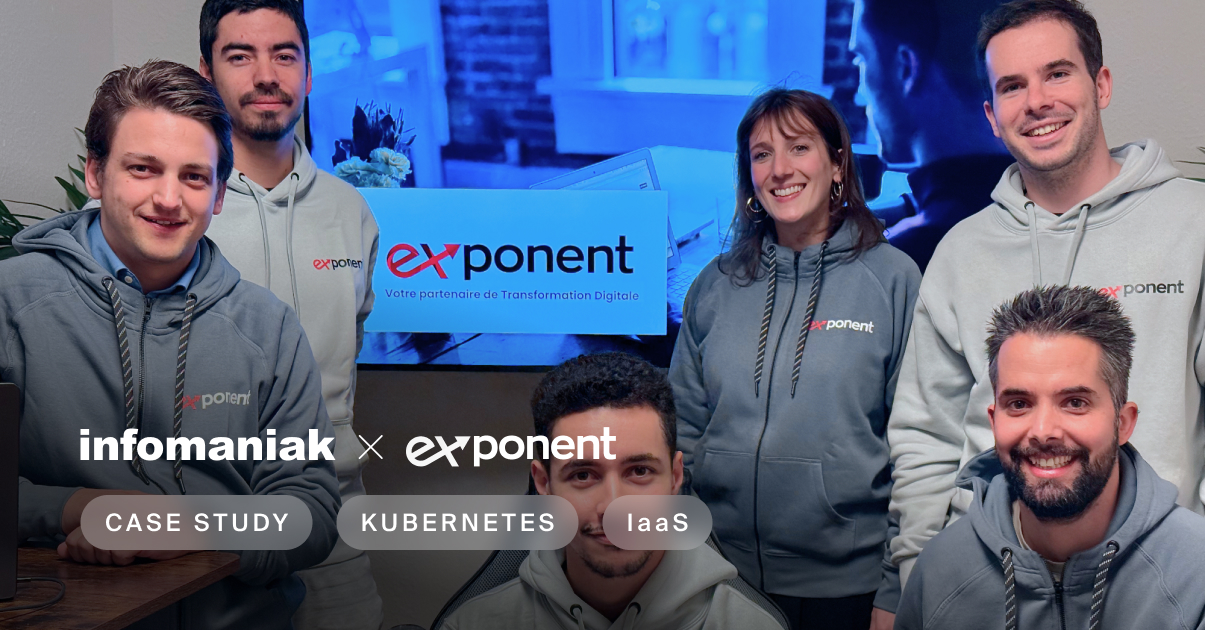Yesterday in Geneva, Infomaniak officially inaugurated a new data center in the presence of the public authorities and key project stakeholders. Its peculiarity? It recovers 100% of the electricity used in order to heat 6,000 homes a year, has no impact on the landscape and is built in the basement of a participatory and eco-responsible cooperative. A major innovation that should inspire the cloud industry and policy makers to raise construction standards.

A data center that doesn’t waste anything
Since 2013, Infomaniak has been cooling its data centers with filtered outdoor air, without resorting to air conditioning. Regularly rewarded for their exemplary energy efficiency, our other data centers nevertheless waste their heat by releasing it into the atmosphere. This new generation of data centers goes one step further and addresses several major challenges in the cloud industry:
- 100% of the electricity used by this new data center is reused to heat households via a district heating network.
- The facility does not require additional water or air conditioning to be cooled.
- It is built on an underground site in a residential area.
- It has no impact on the landscape.
Today, the PUE[1], which measures the energy efficiency of data centers, is no longer sufficient in the face of the climate emergency. We also need to take ERE[2] into account, which evaluates the energy actually consumed compared to the energy reused, as well as the ERF[3], which measures the proportion of the data center’s total energy that is reused for other purposes, such as district heating.
Boris Siegenthaler, Infomaniak’s founder and Head of Strategy.
6,000 homes heated and 3,600 tCO₂eq avoided each year

Since 2 p.m. on 11 November 2024, all the electricity consumed by this new data center has been reinjected as heat into the district heating network of the Canton of Geneva in Switzerland. This project marks a key step in the energy transition of a fast-growing sector by transforming an energy-intensive plant into an active player in energy recovery.
Currently operating at 25% of its potential capacity, Infomaniak’s data center will gradually increase its output to reach full capacity by 2028, guaranteeing a sustainable contribution to society for at least 20 years. At full capacity, the new data center will house some 10,000 servers in an underground area measuring 1,800 m2. It will provide the heating network with 1.7 MW, equivalent to the energy needed to heat 6,000 Minergie-A households per year or to allow 20,000 people to take a 5-minute shower every day.
Geneva will avoid having to burn 3,600 tCO2e of natural gas per year or the equivalent of 5,500 tCO2e of pellets per year while at the same time eliminating the need for 211 lorries per year transporting 13 tonnes of material and the microparticles associated with pellet transport and combustion.
How does it work?
Unlike other projects that only recover a fraction of their heat, Infomaniak reuses 100% of the energy consumed.
- All the electricity used (servers, inverters, fans, etc.) is converted into heat at 40—45 °C.
- This heat is transferred to an air / water exchanger to heat a hot water circuit.
- Heat pumps increase the temperature of the water to transfer the unavoidable heat from the data center to the heating network.
- As it expands, the gas from the pumps decreases the water temperature from 45 °C to 28 °C. This cooled water makes it possible to regulate the temperature of the servers, eliminating the need for traditional air conditioning.
Good for Europe’s technological sovereignty

This data center strengthens Europe’s technological sovereignty and creates value for many local companies by relying on equipment manufactured exclusively in Europe, with the exception of security cameras. The local economy will also benefit directly from the impact of this project.
An open source model for a global impact
This model works, demonstrating to the cloud industry and policy-makers that it is possible to use the energy from data centers twice. It also shows that digital technology should no longer be seen as an end consumer of electricity, but as a driver of energy transition.
The data center has been documented by UNIL, IMD and EPFL as part of the e4s.center programme to demonstrate its energy efficiency in real time and make it easier to reproduce. This work is freely available at d4project.org and incorporates:
- real-time monitoring of performance to demonstrate system effectiveness
- a technical guide to help others replicate this approach
- a folder for policy-makers in order to adapt industry standards
And what now?
Infomaniak is looking for new heating networks for its future data centers.
We already have 1.1 MW ready to be injected and by 2028, a 3.3 MW data center will be needed to meet demand.
Boris Siegenthaler, Infomaniak’s founder and Head of Strategy.
Photos of the data center

More
- D4 documentation prepared by the E4S group (IMD, EPFL, UNIL)
- Infomaniak’s ecological approach
***
[1] Power Usage Effectiveness: the PUE compares the total energy consumed by the data center to that actually used by the servers.
[2] Energy Reuse Effectiveness: ERE measures the energy efficiency of a data center by taking into account the dissipated thermal energy that is reused.
[3] Energy Reuse Factor: the ERF measures the proportion of total energy consumed by a data center that is effectively reused outside the center (e.g. to heat buildings).
SwissTransfer: how ecodesign has made it possible to save 400 W on a continuous basis
Tuesday May 13th, 2025
Infomaniak launches a managed Kubernetes service in its sovereign Public Cloud
Thursday April 3rd, 2025

 Français
Français Deutsch
Deutsch Italiano
Italiano Español
Español































You must be logged in to post a comment.